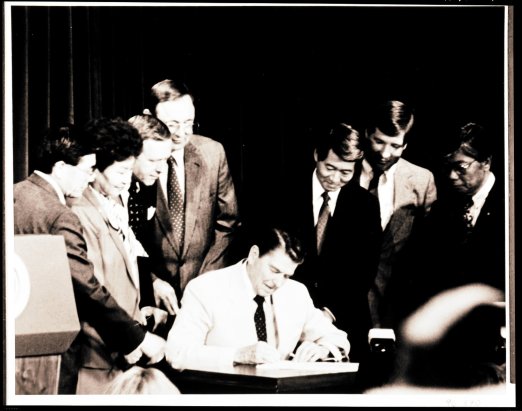
Over the weekend, JANM opened a new special display, Only the Oaks Remain: The Story of Tuna Canyon Detention Station. Organized by a grassroots group called the Tuna Canyon Detention Station Coalition, the display tells the true stories of those targeted as dangerous enemy aliens and imprisoned in the Tuna Canyon Detention Station, located in the Tujunga neighborhood of Los Angeles, by the US Department of Justice during World War II. The detainees included Japanese, German, and Italian immigrants who were considered spiritual, educational, and business leaders in their communities, along with Japanese and other individuals who had previously been forcibly removed from Latin America.
As noted by Hyperallergic magazine, this display is especially relevant right now, in light of some current political rhetoric that favors creating a database of all Muslim Americans in response to terrorist threats. The public hysteria that has led to the targeting of millions of innocent Muslim Americans is eerily similar to the WWII hysteria that quickly led to the incarceration, without due process, of 120,000 people of Japanese descent—most of whom were American citizens, and all of whom were innocent of any crimes.
Thanks to the Japanese American Redress Movement, the US government formally apologized for its actions during WWII, admitting that they were “motivated largely by racial prejudice, wartime hysteria, and a failure of political leadership.” As part of the Civil Liberties Act of 1988, monetary compensation was awarded to each family that was incarcerated. Because of these official actions, Japanese Americans and others felt that the incident had been sufficiently exposed and denounced in the public arena.

Just this past week, however, a Los Angeles Times article exploring the history lessons offered by various national parks, including the Tule Lake Unit and Manzanar National Historic Site, was met with two letters published in the newspaper’s travel section insisting that the WWII incarceration of Japanese Americans was entirely justified. The publication of the letters caused an uproar, particularly among the Japanese American community—this was addressed by the Times via their Readers’ Representative Journal blog. Former JANM staffer Koji Steven Sakai also appeared on KPCC’s Take Two show on December 14, explaining to listeners why the letters were so offensive to his community, and offering some historical context.
The Japanese American National Museum is committed to sharing the history of Japanese Americans in order to promote understanding and appreciation of America’s ethnic and cultural diversity. An important focus of this mission is ensuring that what happened to this group of individuals during WWII never happens again, to any other group of people.
In addition to Only the Oaks Remain, on view through April 9, the museum is currently featuring Uprooted: Japanese American Farm Labor Camps During World War II, on view through January 8, as well as the ongoing exhibition, Common Ground: The Heart of Community, which traces 130 years of Japanese American history.
 Gift of Norman Y. Mineta, Japanese American National Museum (96.370.16A)
Gift of Norman Y. Mineta, Japanese American National Museum (96.370.16A)